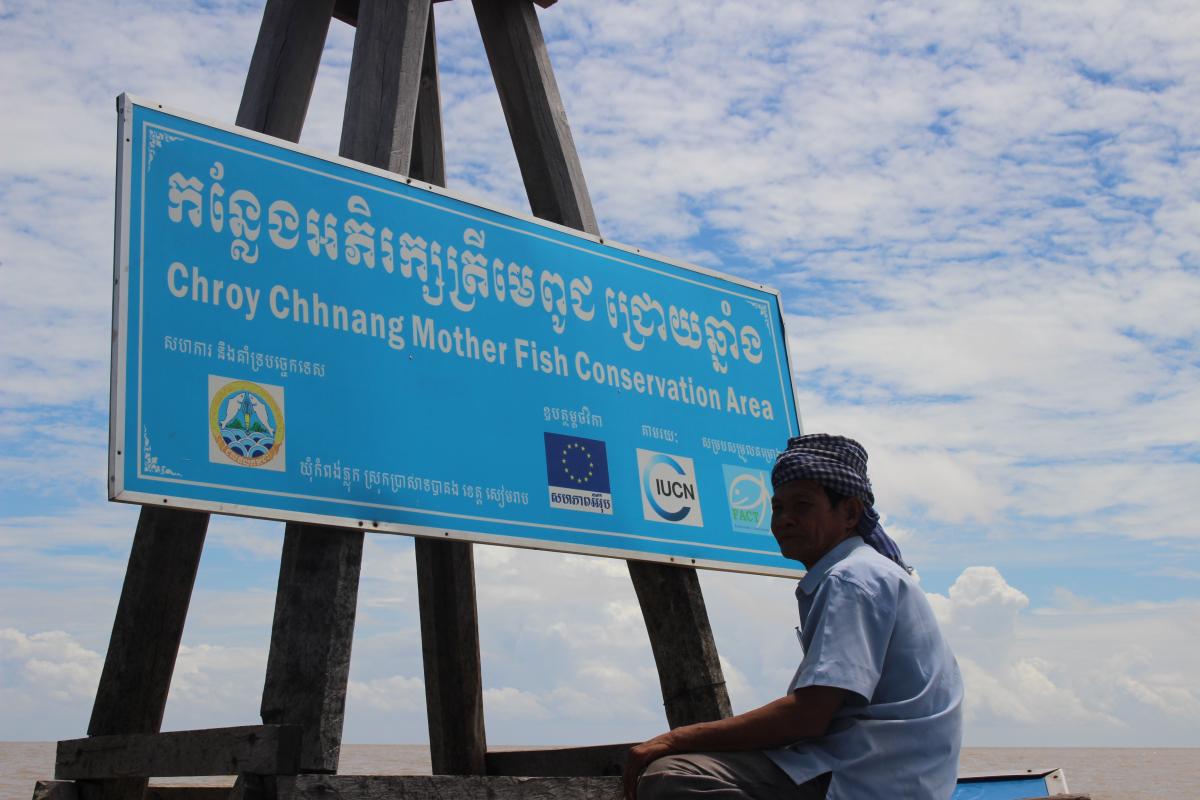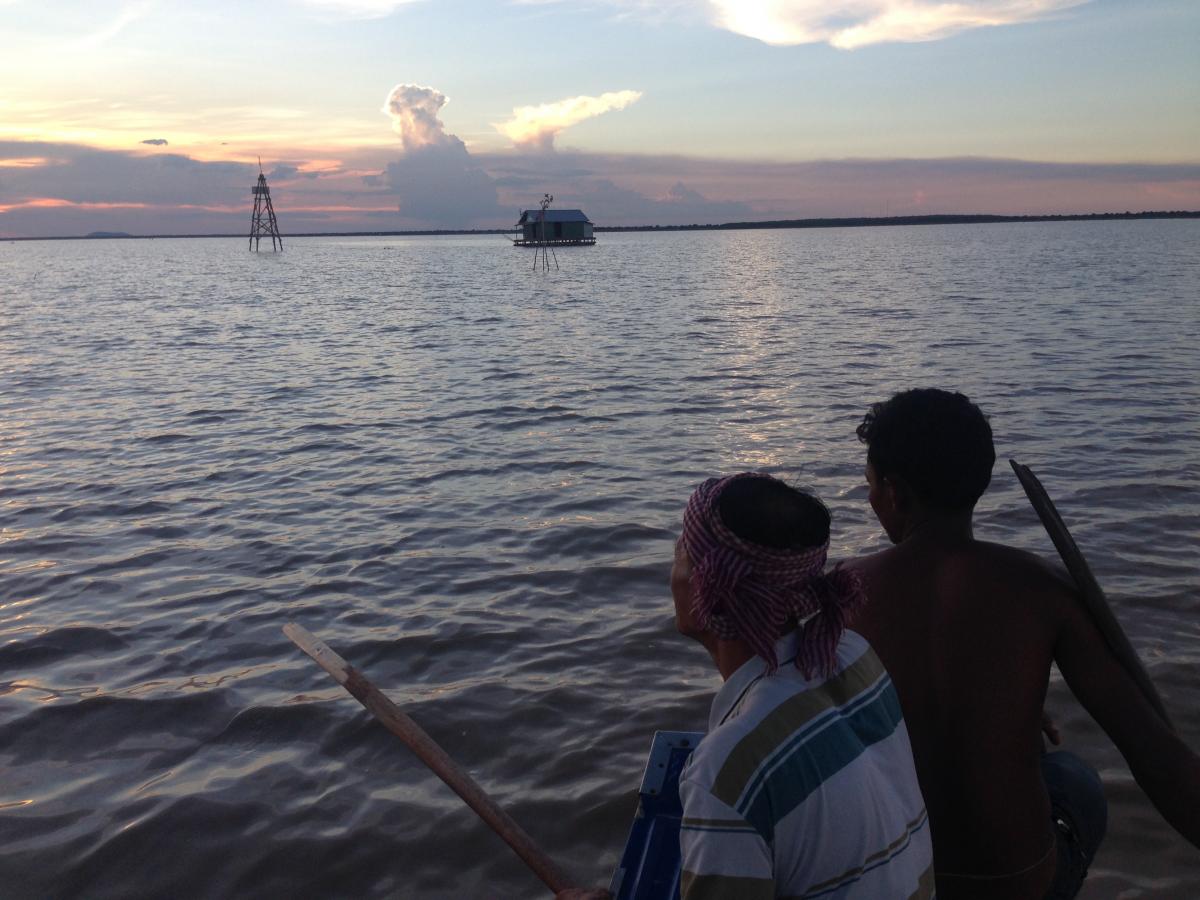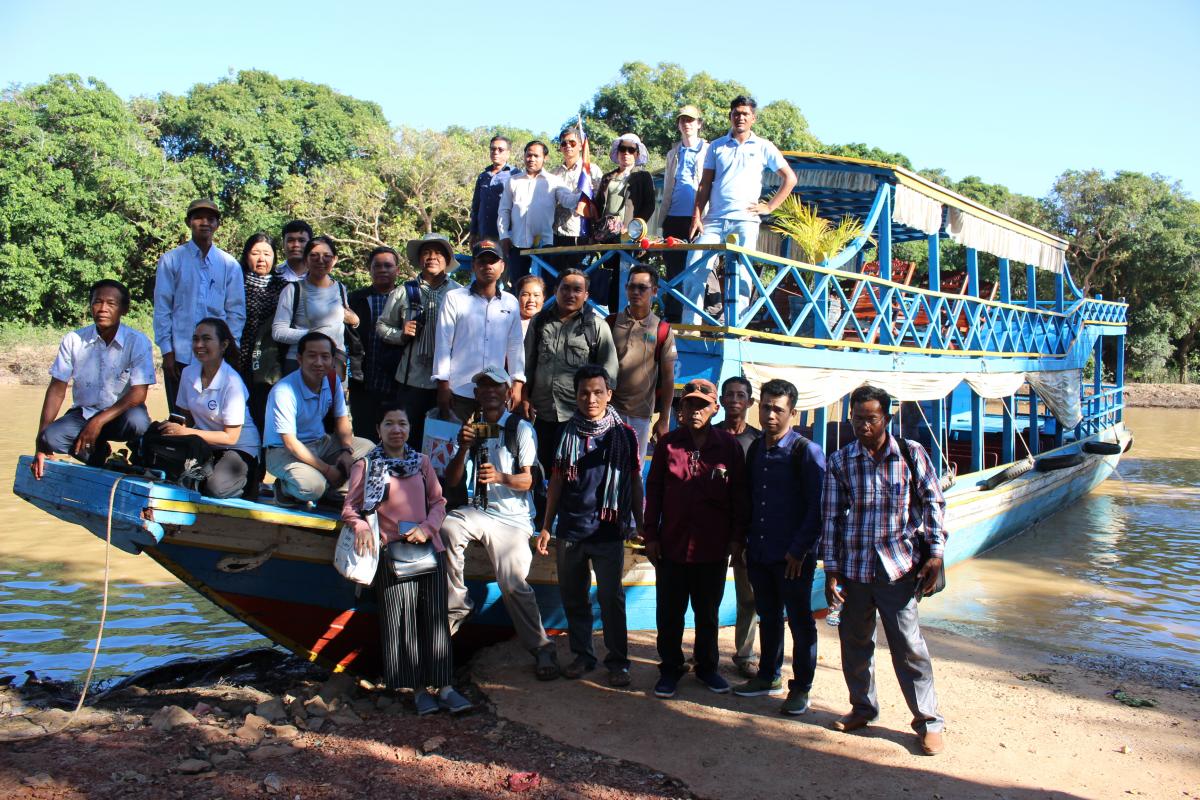Fish Conservation and Climate Change in Kampong Phluk
On July 22, IUCN met the Fisheries Action Coalition Team (FACT) and members of the commune council and community fisheries committee in Kampong Phluk, one of three sites that are the focus of a EU-funded project to strengthen community fisheries in the Tonle Sap, to discuss the fish conservation area (FCA) that the project has helped establish.
 Photo: EU logo © EU
Photo: EU logo © EU
This effect was widely attributed to the protection of "mother fish" in the 200-hectare FCA that disperse out of the FCA as the rains start and lake level rises. Around most of the Tonle Sap, these mother fish move into the flooded forest for food and shelter and to breed and spawn.
Tann Soun, a Kampong Phluk fisher, noted that 13 different species of mother fish, most of them of high-value, had dispersed from the FCA in late June. He also noted a general increase in abundance of freshwater shrimp around the FCA.
This outcome highlights the positive :"spillover" benefits of fish conservation on fish production.
However, Kampong Phluk has also experienced a shortage of fish for both subsistence and selling.
According to FACT's Gnim Signan, this shortage is the result of both natural and human factors: a long drought in early 2016 and illegal fishing. We have seen the same in the other two sites where the project intervenes.
Signan reported a record long period of hot dry weather in Kampong Phluk where the rice farming and fishing, the two main livelihoods, is linked to seasonal changes in rainfall, water levels, and fish migration.
The lack of rain has impacted both rice and fishing.
The lack of rain has also exacerbated illegal fishing, particularly the use of illegal nets. There are two main reasons for this: the first is that the low water levels make it easier to spot and catch fish; the second is that with less fish, there is a need to use more intensive fishing gear to catch the same amount of fish.
Illegal fishing also means that outside the well protected FCA, mother fish are frequently caught, reducing the breeding population, and fish recruitment.
The result is negative feedback loop: with no rain and floodwaters to bring in more fish, fishers resort to illegal fishing to offset this loss, which further reduces future fish harvests, which encourages further illegal fishing.
This demonstrates that the FCA has a critical role to play in adapting to climate change because a sufficiently large, well protected FCA serves to conserve mother fish and future fish stocks even in the severe drought conditions we've experienced in 2016.
Some Kampong Phluk residents have responded to fish shortages by arguing for the conversion of degraded flooded forest into rice fields. While this makes sense for some, expanding intensive rice production by burning and clearing flooded forest will reduce breeding and spawning habitat and fish production. (There's a close linear relationship between the area of flooded forest and annual fish production in the Tonle Sap.)
To address these threats, IUCN and FACT have made two proposals: dredging pools in the FCA to make them deeper to increase water storage and provide additional protection, and increase patrolling to combat illegal fishing.





